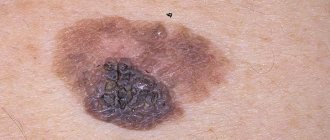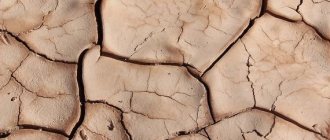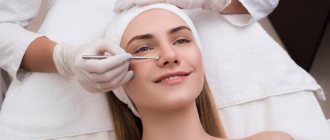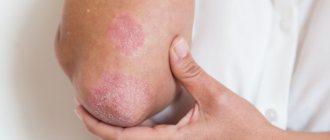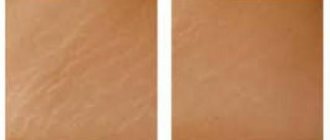Any changes in the skin of the genital organs cause panic in a man. If white dots appear on the penis, this does not always indicate the development of some pathology. In most cases, this picture occurs as a result of insufficient care of the genitals, too frequent use of cosmetics for intimate hygiene, and so on. However, in any case, you need to see a doctor and undergo an examination.
Spots on the skin of the penis - reasons for their appearance
White spots on the penis may indicate the following diseases and conditions:
- Allergies are the most common cause. The white spots are usually itchy. Symptoms often do not appear immediately, but several hours or even several days after skin contact with the allergen.
- Vitiligo is areas of depigmented skin. As a rule, they are found not only on the penis, but also on other areas of the skin. But such spots appear gradually. They may appear first on the skin of the penis. In the future, their growth is observed. The spots become more numerous, they merge, appearing on the scrotum, pubis, as well as areas of the skin remote from the genitals.
- Lichen sclerosus is a precancerous pathology. The spots are localized on the head. This is a type of limited scleroderma. Synonyms: guttate morphia, Tsumbusha's lichen alba, white spot disease, lichenoid scleroderma, atrophic punctate leukoderma. The inflammation is autoimmune in nature. It is not spots that appear, but plaques – that is, they are dense and characterized by thickening of the skin.
- Hypertrophy of the sebaceous glands - small white spots appear on the penis. This is the norm, not a pathology. Hypertrophic sebaceous glands are unsightly, so they are sometimes removed for aesthetic reasons. But they do not threaten health.
- Psoriasis is a systemic disease that can begin in the genitals. Silvery plaques with peeling appear. Often found on the head.
- A tumor can look like anything, including a white spot on the skin of the penis. The growth of the spot and especially its manifestation should cause oncological alertness.
- Setton's nevus is a pigment spot that looks like an area of hyperpigmentation (mole) in the center and a focus of lack of pigment on the periphery. It looks very similar to vitiligo. Treatment is required only for aesthetic reasons.
- Scars - if the skin was damaged and then restored, then it is lighter than the surrounding skin. The cause may be injury, chafing, previous herpes or other inflammation, surgery and minimally invasive procedures. A white ring around the penis may appear when rubbed with a condom. Small spots form after acne resolves.
Diagnostic measures
If white spots, spots and other growths appear on the skin of the genitals, a man needs to consult a specialist for testing and diagnosis. Medical examination includes the following activities:
- visual inspection;
- examination under a colposcope;
- taking tests of blood, urine, discharge from the urethral canal and from the surface of the penis;
- Ultrasound of the penis and pelvic organs;
- biopsy.
The source of the lesion is not always determined by external manifestations. In some cases, an examination may be required, the results of which become known 1-10 days after taking the material. And only after this the doctor will accurately determine the cause of the dots and prescribe appropriate therapy.
What does a white spot on the penis look like?
For different diseases, white spots on the penis look different:
- vitiligo - spots of different sizes with clear boundaries, irregular shape, can merge, are multiple, do not rise above the skin level
- Setton's nevus - looks the same as vitiligo, only there is a mole in the center (sometimes the mole disappears, but the depigmented spot remains)
- psoriasis – silvery, dense plaques with small scales
- scars - may be denser than the surrounding skin, rise above it or fall below the level
- lichen sclerosus - multiple small (no more than 1.5 cm) white papules rising above the skin level (can merge into irregularly shaped plaques)
Diagnosis and treatment
Treatment of diseases of the male reproductive system, including treatment of STDs, is the responsibility of urologists and andrologists. In case of an infectious lesion, therapy is prescribed by a venereologist. The cause of plaque on the penis is diagnosed based on the results:
- visual medical examination;
- studying the patient's premorbid background;
- laboratory tests: OCA and blood biochemistry, urethral smear, urine test;
- ultrasound examination of the pelvic organs.
Based on the results of the examination, the doctor chooses treatment tactics, determines medications, dosage and duration of the therapeutic course. For bacterial, prokaryotic, and parasitic infections, antibiotics are prescribed. Candidiasis is treated with antimycotics in tablets and ointments. For diabetes and psoriasis, basic treatment and diet therapy are adjusted.
Preventive measures help prevent unpleasant manifestations - careful genital hygiene, barrier contraception, strengthening the immune system and following the recommendations of the attending physician (for chronic diseases).
An important point is a timely visit to a urologist, both in the event of symptomatic complaints and for prevention. Make an appointment
Are white spots on the penis dangerous?
Usually white spots on the penis are unpleasant, but not dangerous. The exceptions are:
- psoriasis
- lichen sclerosus
- penile cancer
Psoriasis is dangerous in itself. Spots on the testicles or penis do not directly pose a threat to life. Psoriasis can affect large areas of the skin as well as internal organs.
Lichen sclerosus on the penis is not dangerous for 95% of people. But in 5% of cases it transforms into squamous cell skin cancer.
The most dangerous white spots on the penis are associated with a malignant tumor. It is rare to die from this type of cancer, as there are effective surgical treatment methods. But partial or complete removal of the penis dramatically reduces a man’s quality of life.
Causes of white plaque
The causes of white plaque on the penis are classified into three groups:
- physiological. Associated with the peculiarities of the secretion of tyson glands located under the foreskin. The problem is aggravated by the lack of proper hygienic care of the genitals;
- non-infectious (endogenous). Caused by disruption of internal organs. Whitish accumulations on the penis are a concomitant symptom of chronic diseases or a sign of activation of opportunistic microorganisms that are part of the natural microflora of the body;
- infectious (exogenous). These are sexually transmitted diseases (STDs).
In the first case, it is enough for a man to get medical advice. To eliminate other causes, proper treatment is required.
Infectious factors
Infections affecting the male genital organ are most often transmitted sexually
and appear as a result of unprotected sexual contact with an infected sexual partner.
Among them:
- Infectious candidiasis
Unlike non-infectious thrush, it is accompanied by itching, cheesy discharge, and an unpleasant sour odor. Treatment is carried out in parallel by both partners. Men are usually prescribed antifungal creams and ointments. - At genital herpes
Red dots and bubbles with colorless filling appear on the head of the penis. Herpes is accompanied by severe itching; bursting blisters eventually turn into sores. Simultaneously with the appearance of the rash, the lymph nodes in the groin enlarge. The patient is bothered by burning and pain in the genital organs, the temperature may rise and the state of health may sharply deteriorate. Without treatment, genital herpes quickly spreads to other organs. - Pink-red pimples, accompanied by peeling skin and unbearable itching, are signs balanitis
. For treatment, it is necessary to strictly follow the rules of hygiene and make baths for the penis with furatsilin or potassium permanganate. - The appearance of red spots may indicate infection with a sexually transmitted disease
: gonorrhea, syphilis, chlamydia.
Sexually transmitted diseases can be asymptomatic for a long time; rashes on the penis disappear for a while, only to later turn into large spots with ulcers.
Do not delay treatment of venous diseases. Uncontrolled development of the disease leads to male infertility and other unpleasant consequences.
If a man has psoriasis
, then red scaly spots may appear everywhere. They occur especially often on the scalp, in the groin, and sometimes on the mucous membrane of the penis. The causes of the disease have not yet been clarified, but there are many ways to dampen the acute phase of the disease, so you should not delay the treatment of psoriasis.
Prevention measures
To prevent white spots from appearing on the genitals, a man needs to follow some simple rules . The main ones are the following:
- Monitoring the cleanliness of the penis. After each urination, it is recommended to shake off any remaining urine or remove it with a soft cloth. It is also necessary to regularly (1-2 times a day) rinse the penis under running water using special hygiene products.
- Preventing injury. To wash the penis, you cannot use rough washcloths; you need to remove moisture with a soft towel, without rubbing the skin of the penis.
- Before contacting the head and penis, be sure to wash your hands.
- After visiting swimming pools, natural reservoirs, saunas, public baths and toilets, water parks, it is necessary to treat the surface of the penis with an antiseptic solution (Furacilin, Chlorhexidine, Miramistin). Treatment should be carried out carefully, avoiding the drug getting into the urethra.
- Always use a condom when having sex. If unprotected sexual intercourse does occur, you should treat the penis with an antiseptic and urinate, which will help clean the urethra.
- Review your daily diet and include more healthy foods.
- Adjust your daily routine, paying more attention to sports.
- Regularly undergo medical examination, which will prevent the development of serious pathologies.
When white spots appear on the penis, you must first of all pay attention to the cleanliness of the genitals. In most cases, it is rare, irregular washing that causes this condition. If the appearance of spots is not associated with a violation of hygiene standards, you should contact the clinic for diagnostics - it is quite possible that some pathological process is developing in the body. You should not delay your visit to the doctor, as this can lead to serious complications.
Treatment
The doctor, after comparing the identified symptoms, makes a preliminary diagnosis. For a more accurate diagnosis of the disease, tests are prescribed to determine the presence or absence of infectious agents. Allergic inflammation is treated by eliminating the allergen and taking antihistamines.
Exactly following your doctor’s instructions allows you to quickly relieve allergy symptoms.
Infectious diseases, the symptom of which are red rashes on the penis, can cause diseases of the bladder, prostate, kidney diseases, inflammation of the scrotum and testicles.
Infectious diseases of the male genital organs are associated with infection through unprotected sex. When treating a man, parallel treatment of sexual partners is necessary. Bacteria are treated with antibiotics.
The activity of viruses is suppressed with blockers and immunomodulators, and fungal diseases with antimycotic agents. The duration of therapy depends on the type of disease and the degree of its neglect.
Non-infectious factors
Red spots may turn out to be simple acne that affects the mucous membrane of the genital organ. After the irritation is removed, black dots characteristic of acme may remain on the penis.
A weakened body of a man with reduced immunity cannot effectively resist the effects of pathogenic bacteria, viruses, and fungi. One of the symptoms of non-infectious thrush
red dots may appear on the male organ.
The natural protective barrier of the mucous membranes and healthy microflora under the leathery fold of the foreskin, regular hygiene procedures can easily cope with saprophytic candida, preventing the rapid growth of these microscopic fungi. In a state of harmless cohabitation, the fungus constantly lives in the body of any person. With a weakened state of the body and decreased immunity, candidiasis
in men it can take
a clinical form
.
Advanced candidiasis enters the chronic stage
, passes to the prostate gland, causing its inflammation.
Chronic candidiasis can become one of the main factors in the occurrence of infertility and weakened potency in men.
Irritation on the head of the penis arises from basic non-compliance with hygiene rules. If you don’t change your underwear for several days in a row and neglect to shower, the result in the form of rashes and irritations will not take long to arrive.
The mucous membrane may become covered with a rash in the form of blisters filled with colorless liquid. This is a symptom of an allergic reaction to chemical additives in detergents, synthetic fabrics, condom lubricants or lubricants. Refusal to use allergenic substances and materials quickly leads to the disappearance of rashes. Allergic dermatitis is treated by an allergist.
. To identify the irritant, a blood test from a vein or a sensitivity test on the skin of the shoulder is required. In the absence of a positive result from the effects of individual reagents, the autoimmune or psychosomatic nature of the appearance of spots on the penis is considered.
The reason for the appearance of rashes on the penis is sometimes uncomfortable or tight underwear, injuries after too active sexual intercourse.
Associated symptoms
Sometimes red spots do not cause any additional discomfort. Most often, rashes are accompanied by a number of unpleasant symptoms:
- Severe itching, the feeling that the sore spot is itching until it burns, is very unpleasant. It is almost impossible to work and lead a normal lifestyle with constant severe itching.
- Involuntary discharge from the urethra.
- Painful sensations when urinating.
- Increased body temperature.
- Nagging pain throughout the body, headache.
- Red rashes on the penis can develop into blistering pimples, which burst over time or when scratched.
- Affected organs may become swollen and inflamed.
Tell your doctor in detail about all the symptoms that bother you. An experienced specialist can make a preliminary diagnosis based on the medical history and prescribe appropriate laboratory tests.
Standard studies for the infectious nature of red rashes
Early diagnosis of the cause of red spots is the main factor in a quick cure.
The danger of advanced infections lies in the complications of the disease.
| General tests | Tests to detect infection |
| Analysis of urine | Blood test for STDs |
| Prostate examination | Bacterial culture of urethral contents |
| Sowing according to Nechiporenko | PCR analysis |
Bacterial culture not only serves to clarify the diagnosis, but also determines the sensitivity of microorganisms to the effects of antibiotics.
Treatment options
The choice of therapy directly depends on the factor that provoked the formation of white spots on the genitals. If they are a consequence of a disease, it is necessary to treat it. Depending on the etiology, a specific treatment regimen is selected.
- For candidiasis, antifungal drugs are prescribed in combination with vitamin complexes. It is recommended to use ointment for topical application.
- For HPV, antiviral therapy is indicated, which is aimed at strengthening the immune system. Electrocoagulation is used to remove growths. cryodestruction, laser method.
- STDs must be treated with antibacterial agents that are properly selected for the disease. It is extremely important to complete the entire course of therapy followed by a follow-up laboratory test.
- Allergic manifestations can be eliminated with the help of antihistamines and vitamin complexes. Treatment with antiseptic agents and solutions is considered appropriate. The head needs to be smeared with cream, which is applied in a thin layer.
It is important to know! In case of increased activity of the sebaceous glands, which leads to excessive secretion production, you need to contact a nutritionist and change your diet.
Fatty, fried, spicy foods, marinades, smoked foods, alcohol, and carbonated drinks are excluded from daily consumption. Fast food, baked goods and sweets are prohibited.
